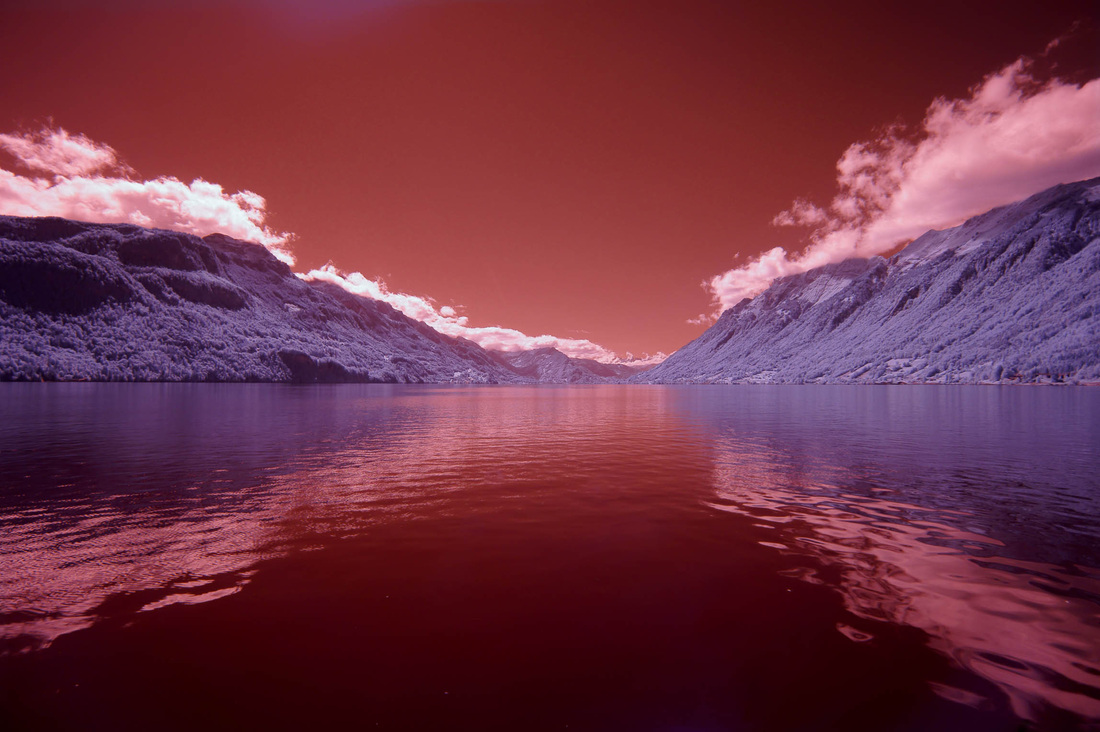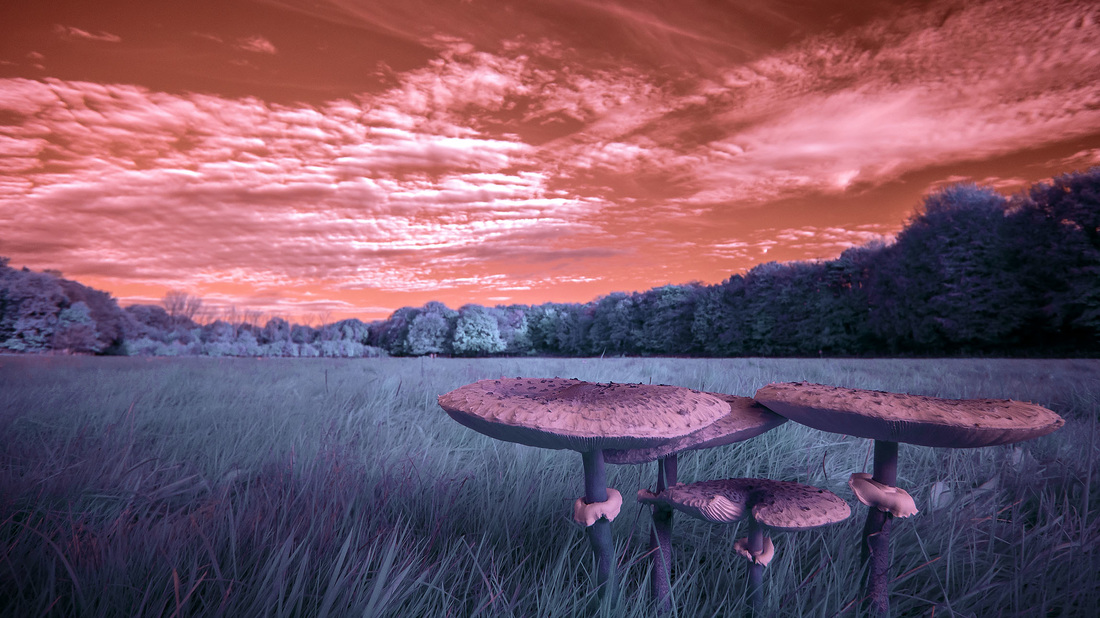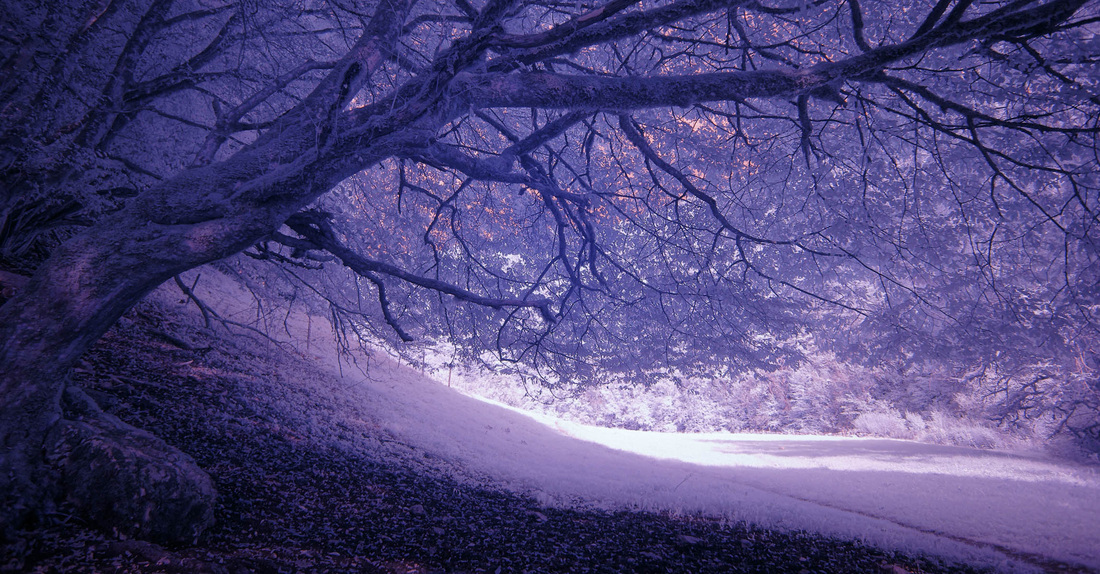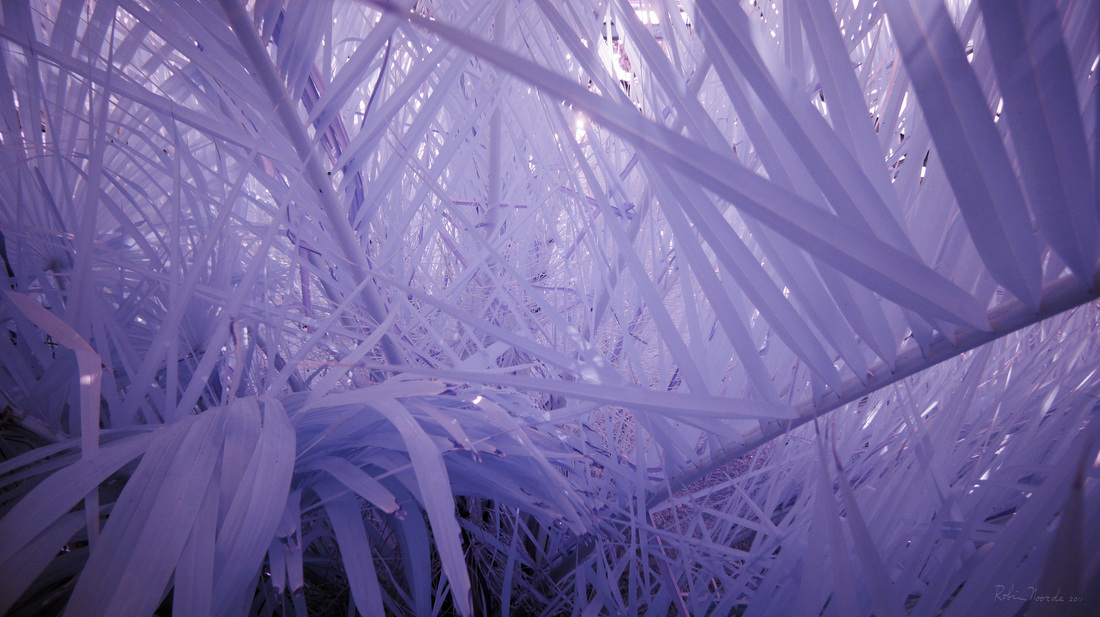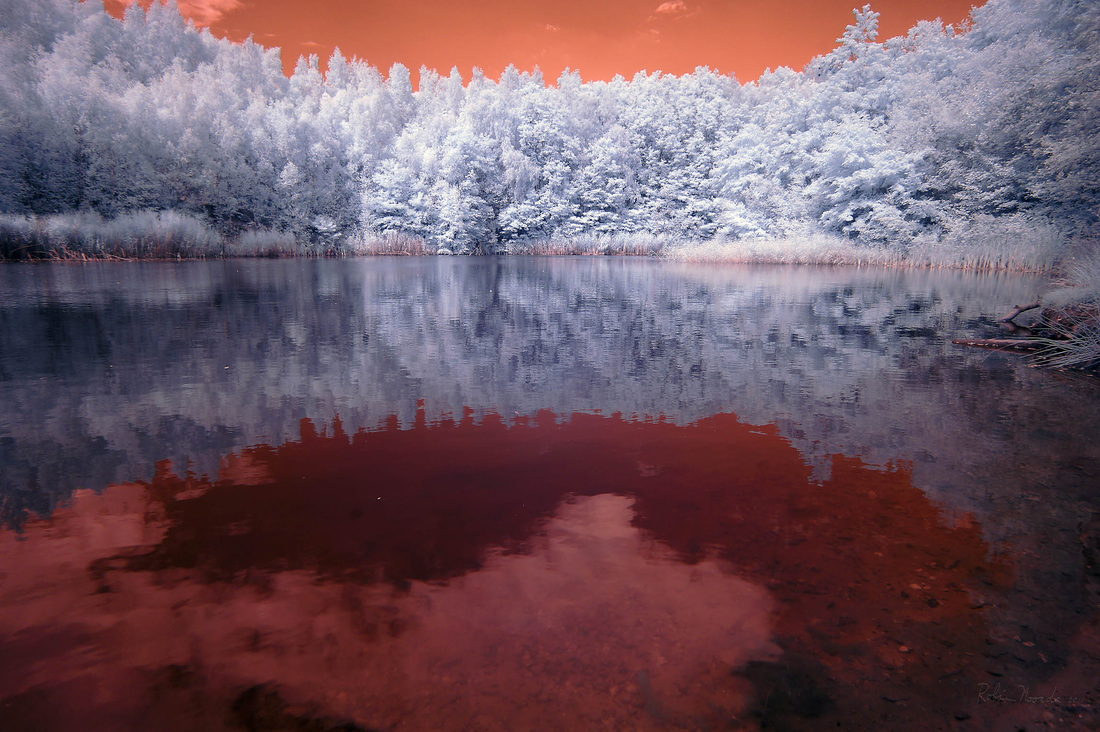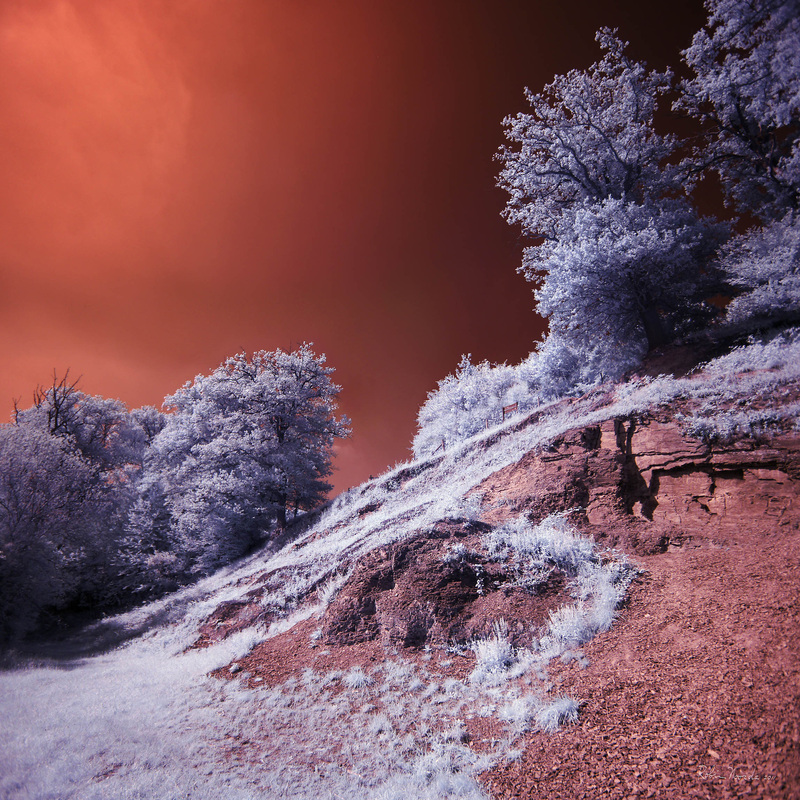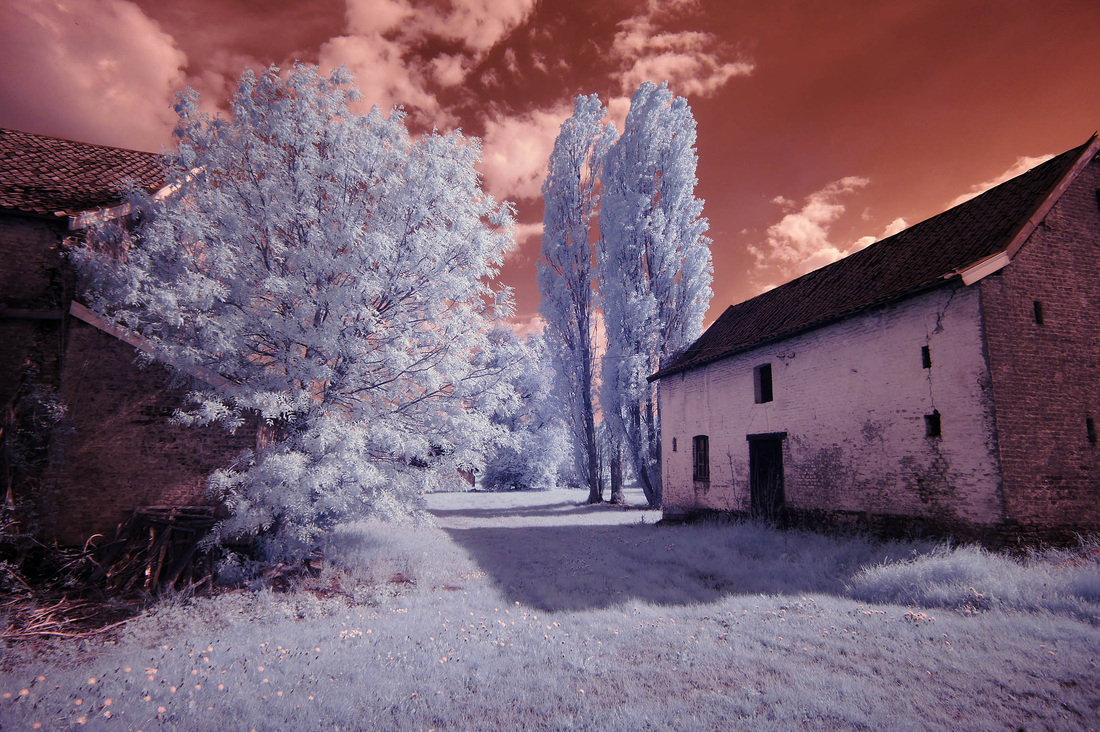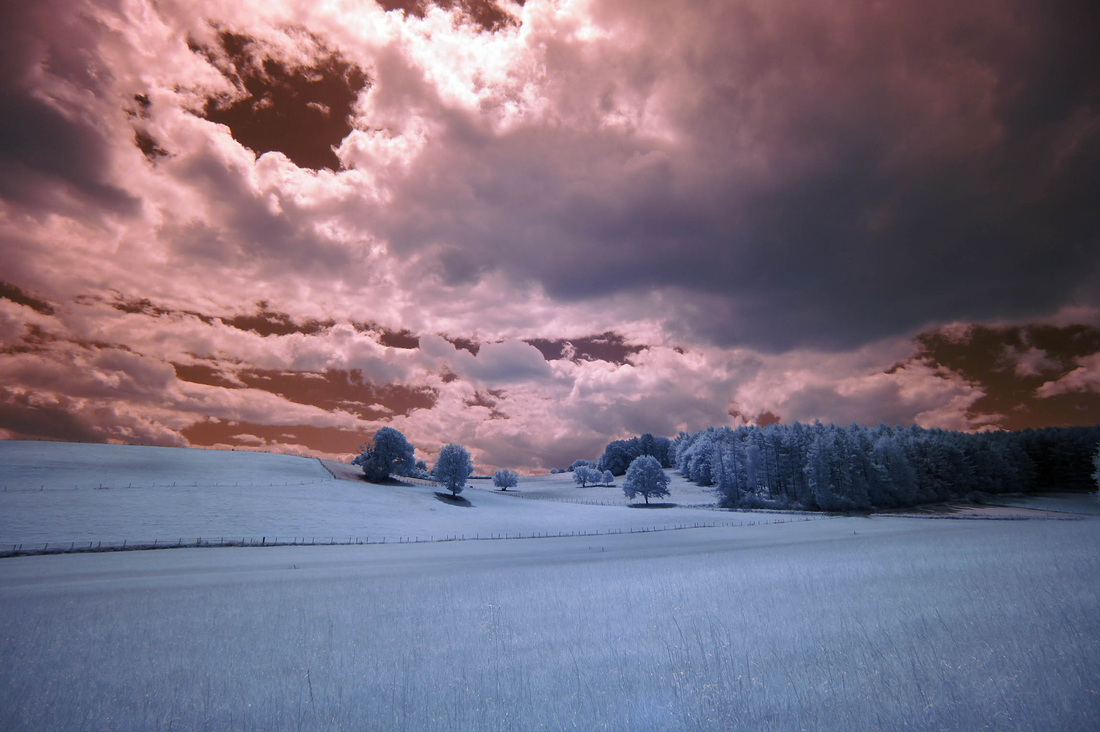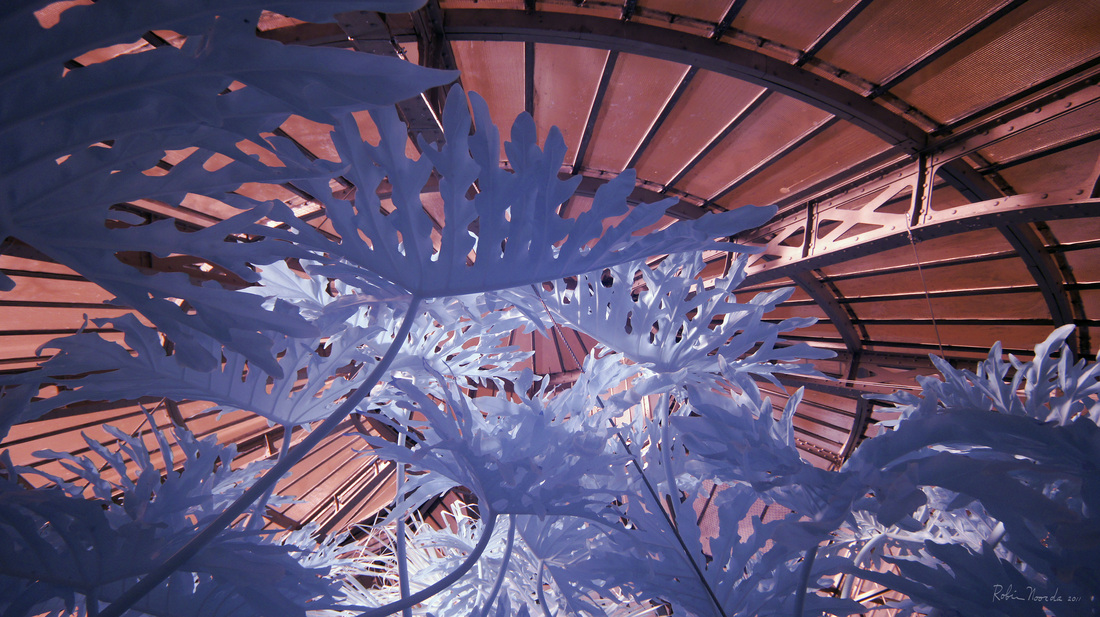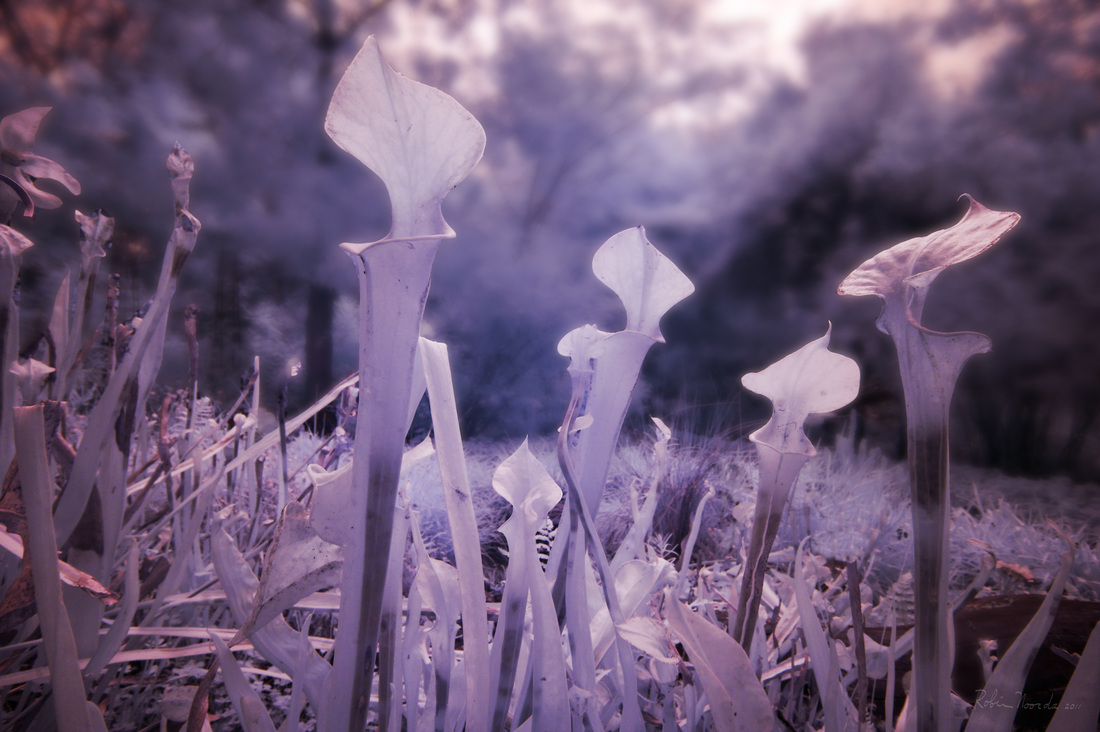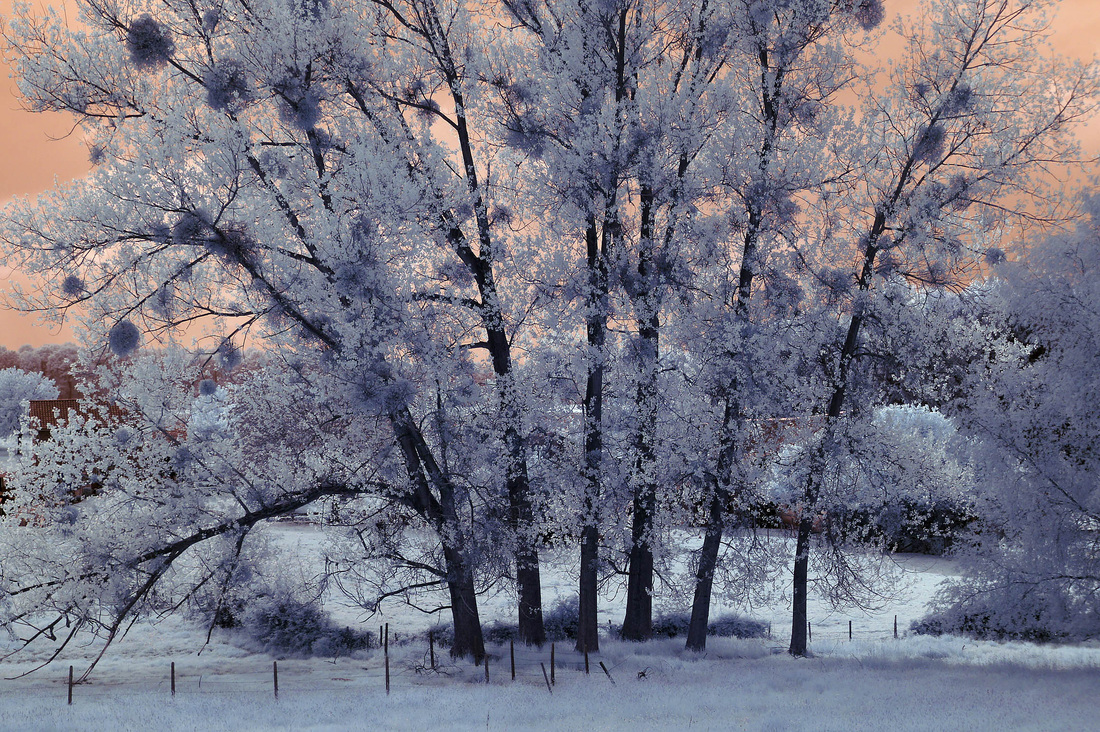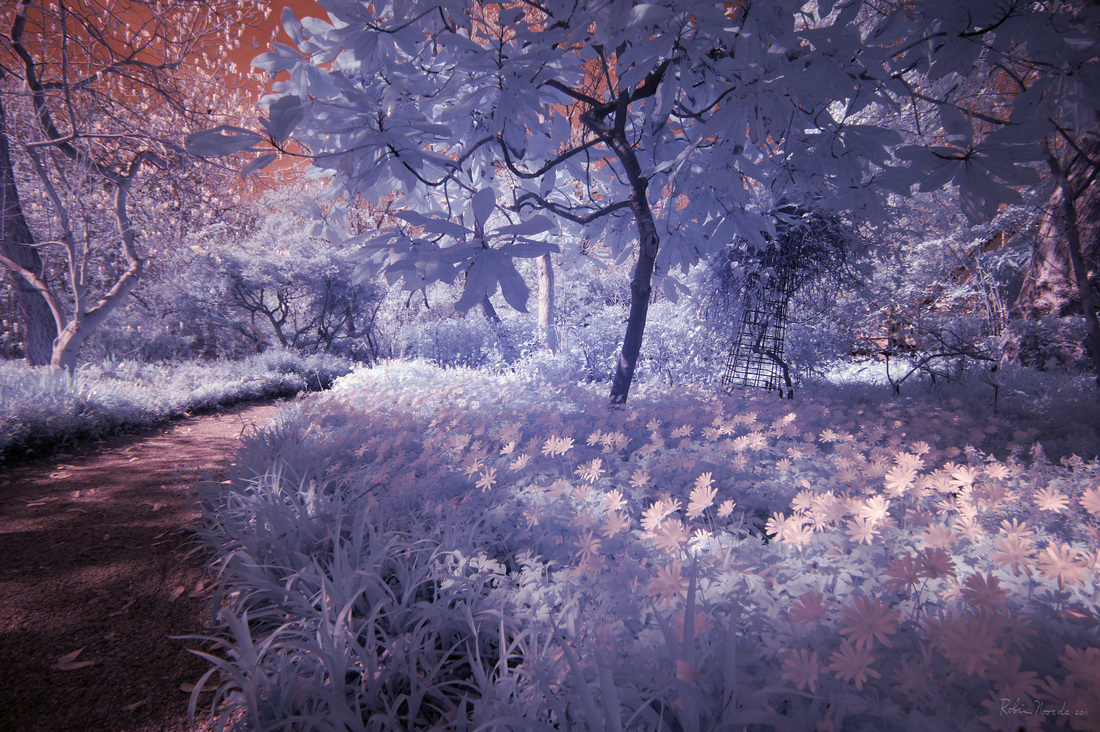Infrared Photography
In the so-called 'near infrared spectrum' leaves, plants and grass colour blue to white, as if there were frost on the branches and leaves. The detail in the shadows remains much more visible. The blue sky gets a deep burgundy red colour. All this creates an extraordinary contrast range.
Insects are not able to see red, and, just like birds, are able to see more clearly in the ultraviolet part of the spectrum. Plants use this ultraviolet part to achieve even brighter colours with which to attract insects for pollination, and to alert birds to fruit, berries and seeds. What we see in infrared is actually the plant in a pure way, without the colours that are designed to lure animals. The unadorned plant, stripped of make-up, the shamelessly naked plant, as it were.
But perhaps it is also the perception of an alien creature that views our blue-green planet as, respectively, a red and light blue fairytale landscape. Or conversely, it may resemble a once lush landscape on Mars, with dark red skies and alien, icy blue vegetation...
Normally infrared pictures are presented in black and white as people generally don't like those strange colours. The early infrared films where black and white anyhow. I like the strange colours of digital IR photo's, but if you don't, click here to see them in black and white.
In the so-called 'near infrared spectrum' leaves, plants and grass colour blue to white, as if there were frost on the branches and leaves. The detail in the shadows remains much more visible. The blue sky gets a deep burgundy red colour. All this creates an extraordinary contrast range.
Insects are not able to see red, and, just like birds, are able to see more clearly in the ultraviolet part of the spectrum. Plants use this ultraviolet part to achieve even brighter colours with which to attract insects for pollination, and to alert birds to fruit, berries and seeds. What we see in infrared is actually the plant in a pure way, without the colours that are designed to lure animals. The unadorned plant, stripped of make-up, the shamelessly naked plant, as it were.
But perhaps it is also the perception of an alien creature that views our blue-green planet as, respectively, a red and light blue fairytale landscape. Or conversely, it may resemble a once lush landscape on Mars, with dark red skies and alien, icy blue vegetation...
Normally infrared pictures are presented in black and white as people generally don't like those strange colours. The early infrared films where black and white anyhow. I like the strange colours of digital IR photo's, but if you don't, click here to see them in black and white.

